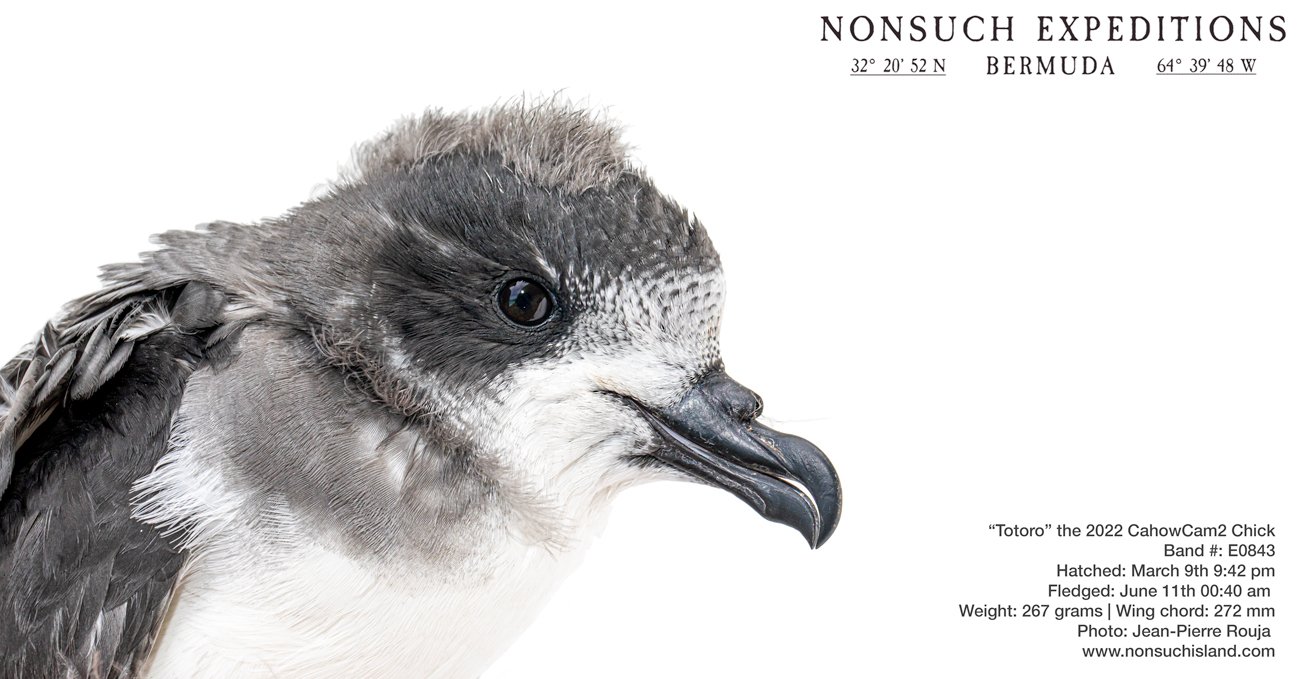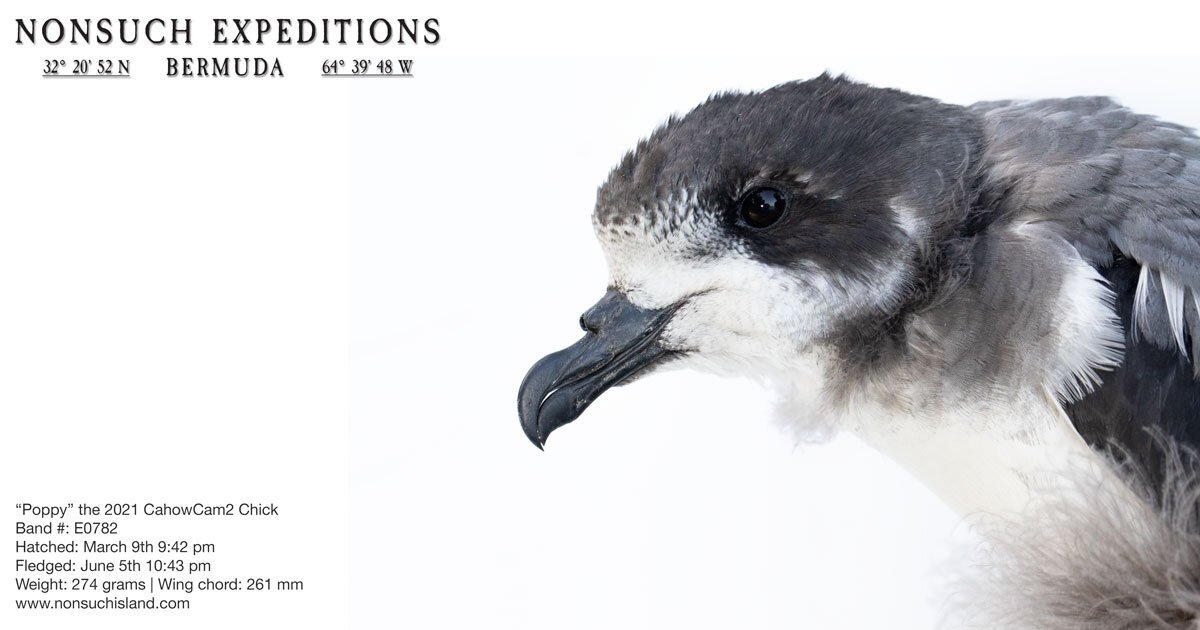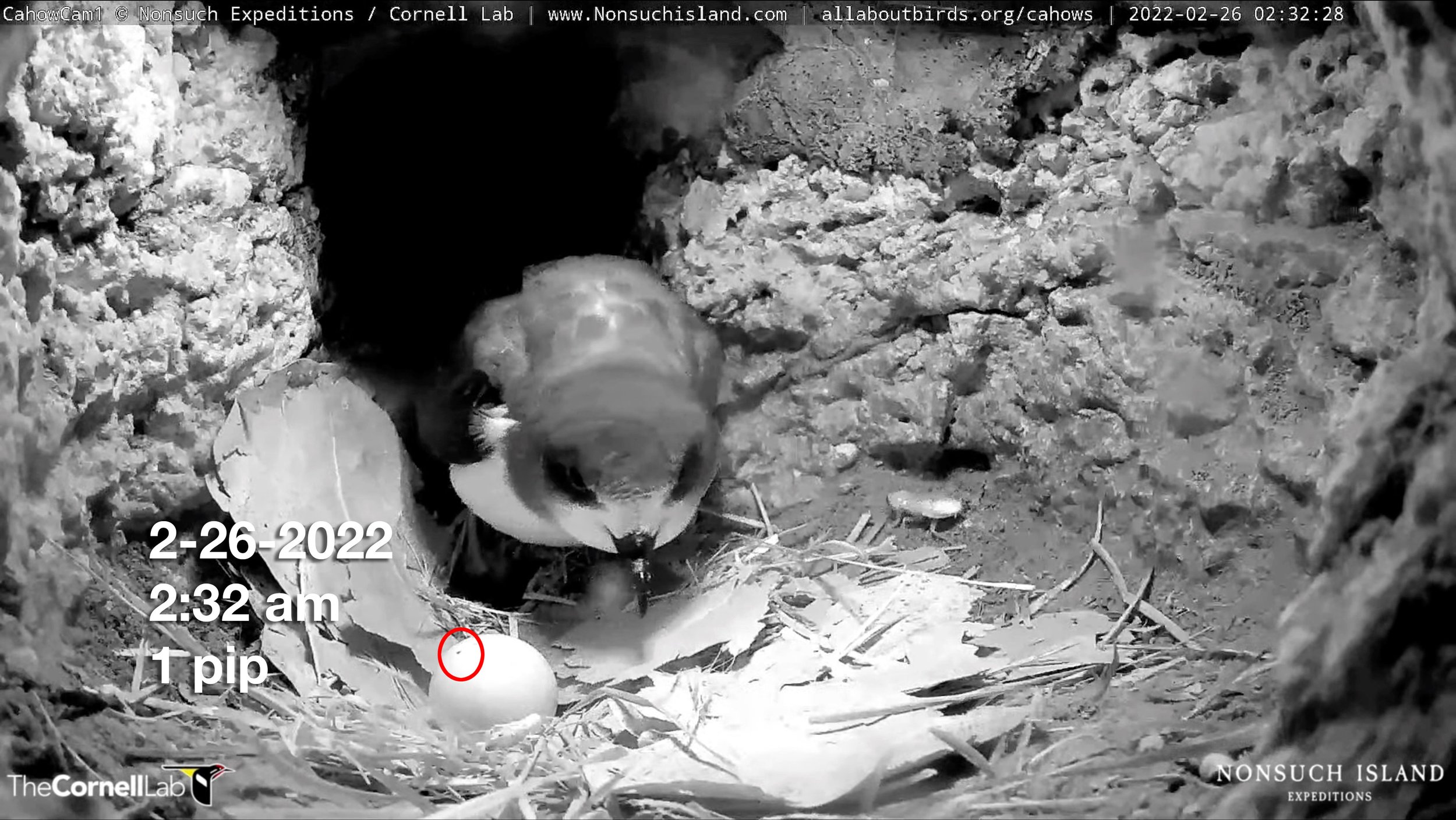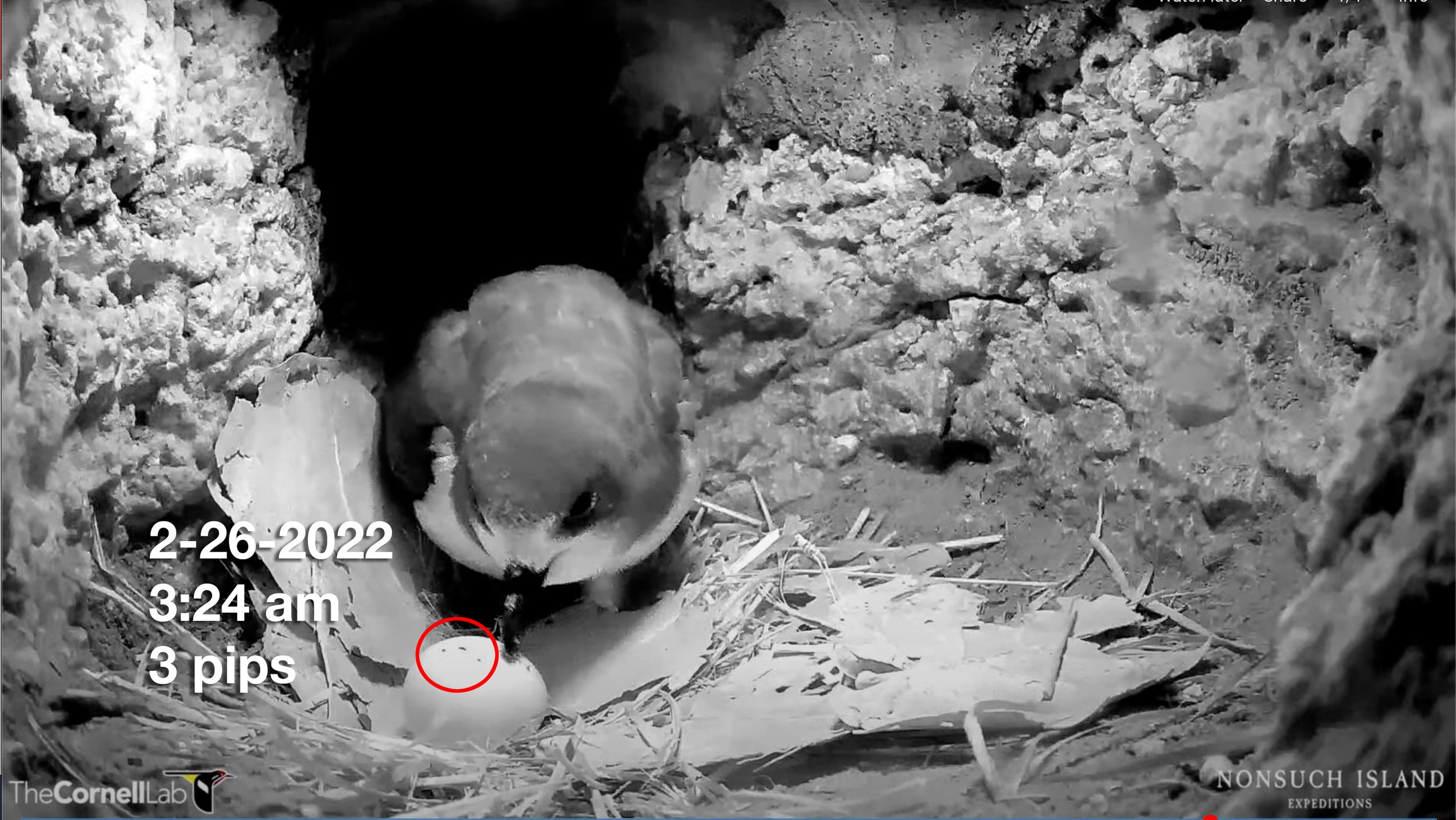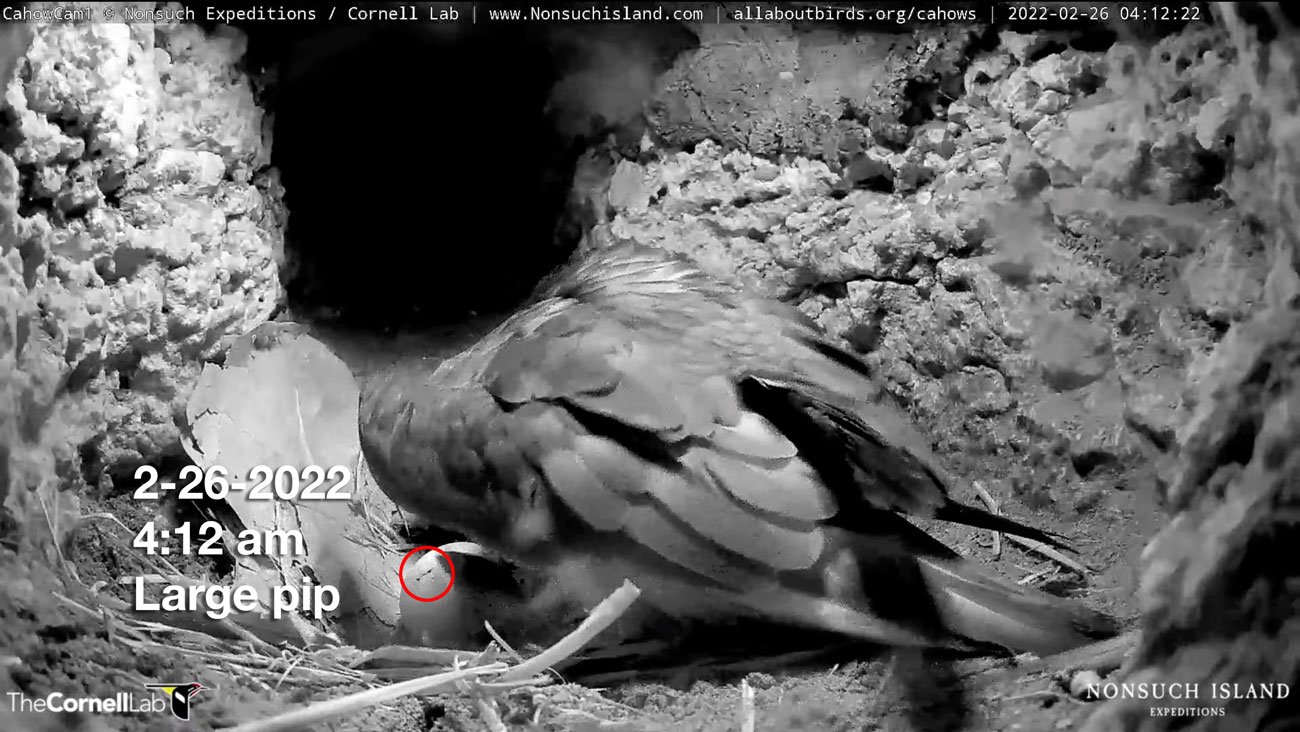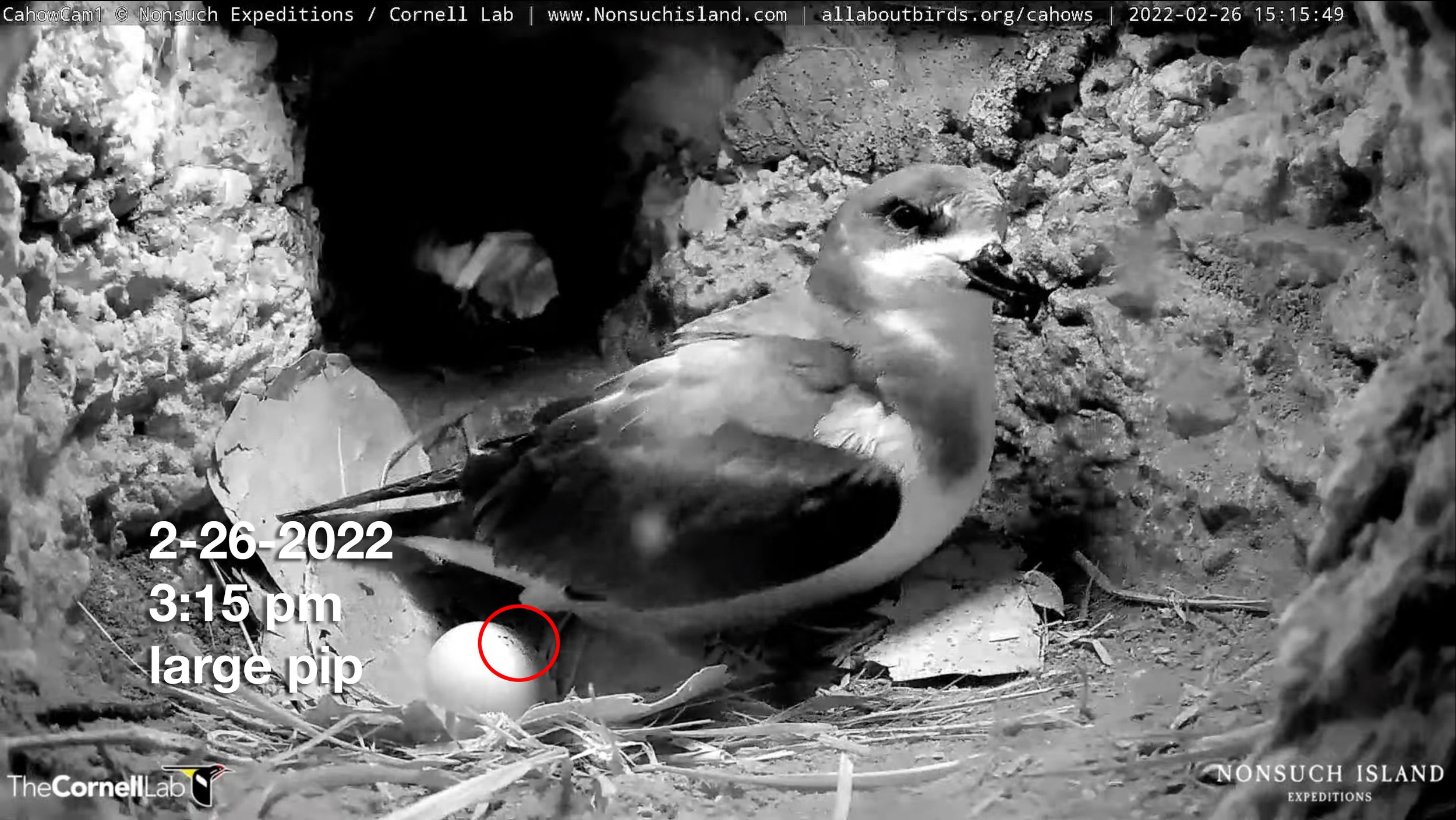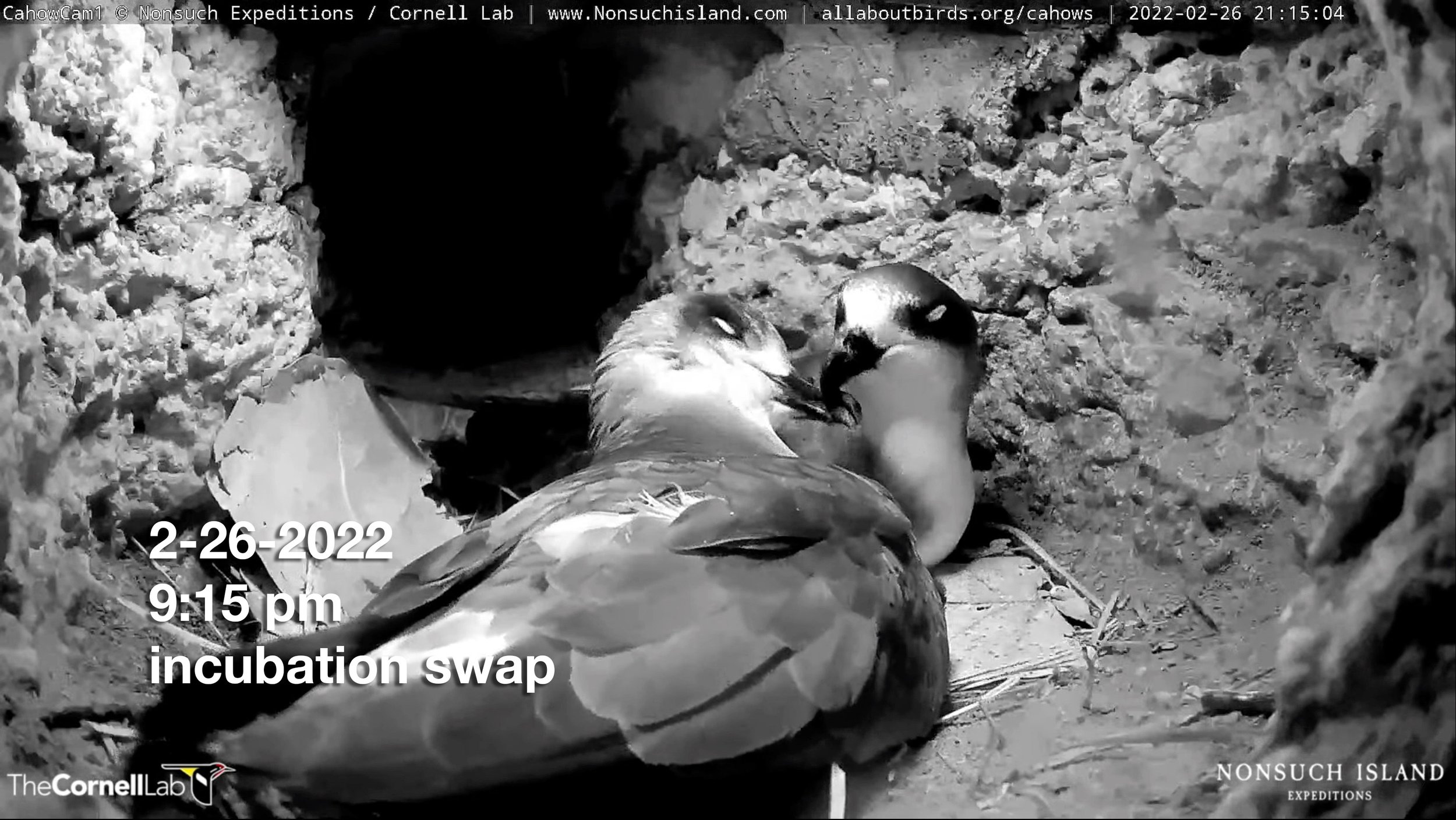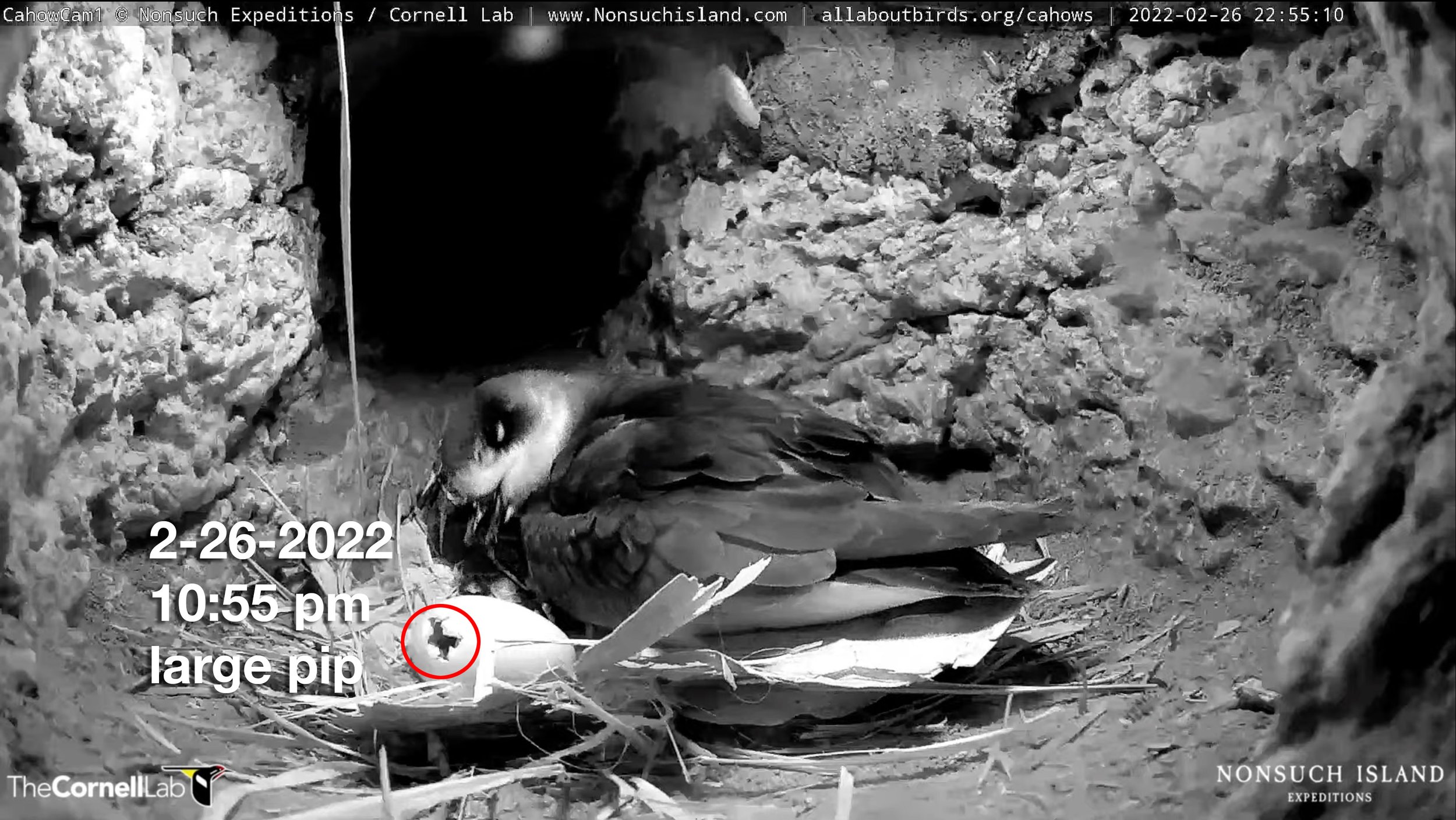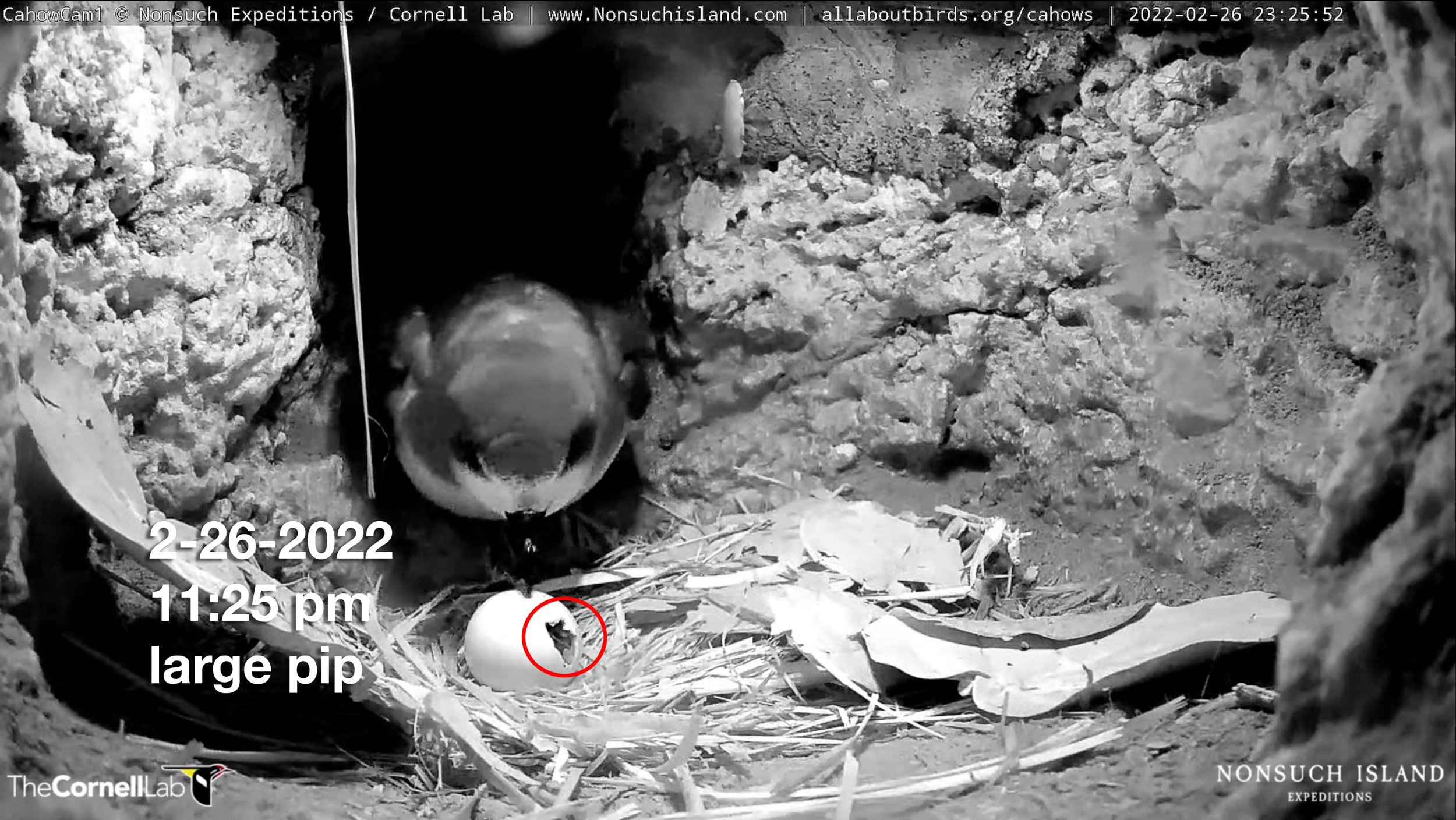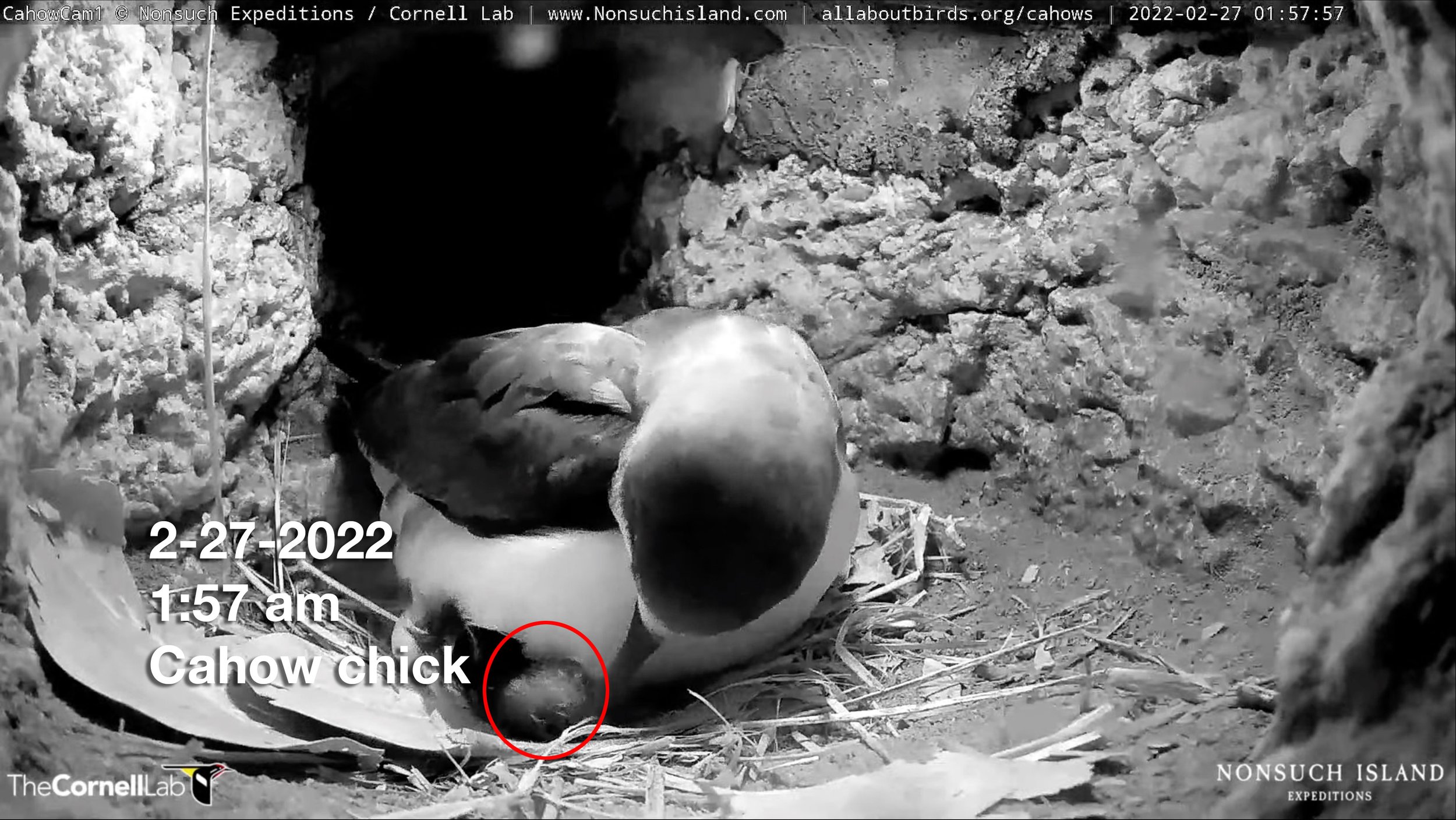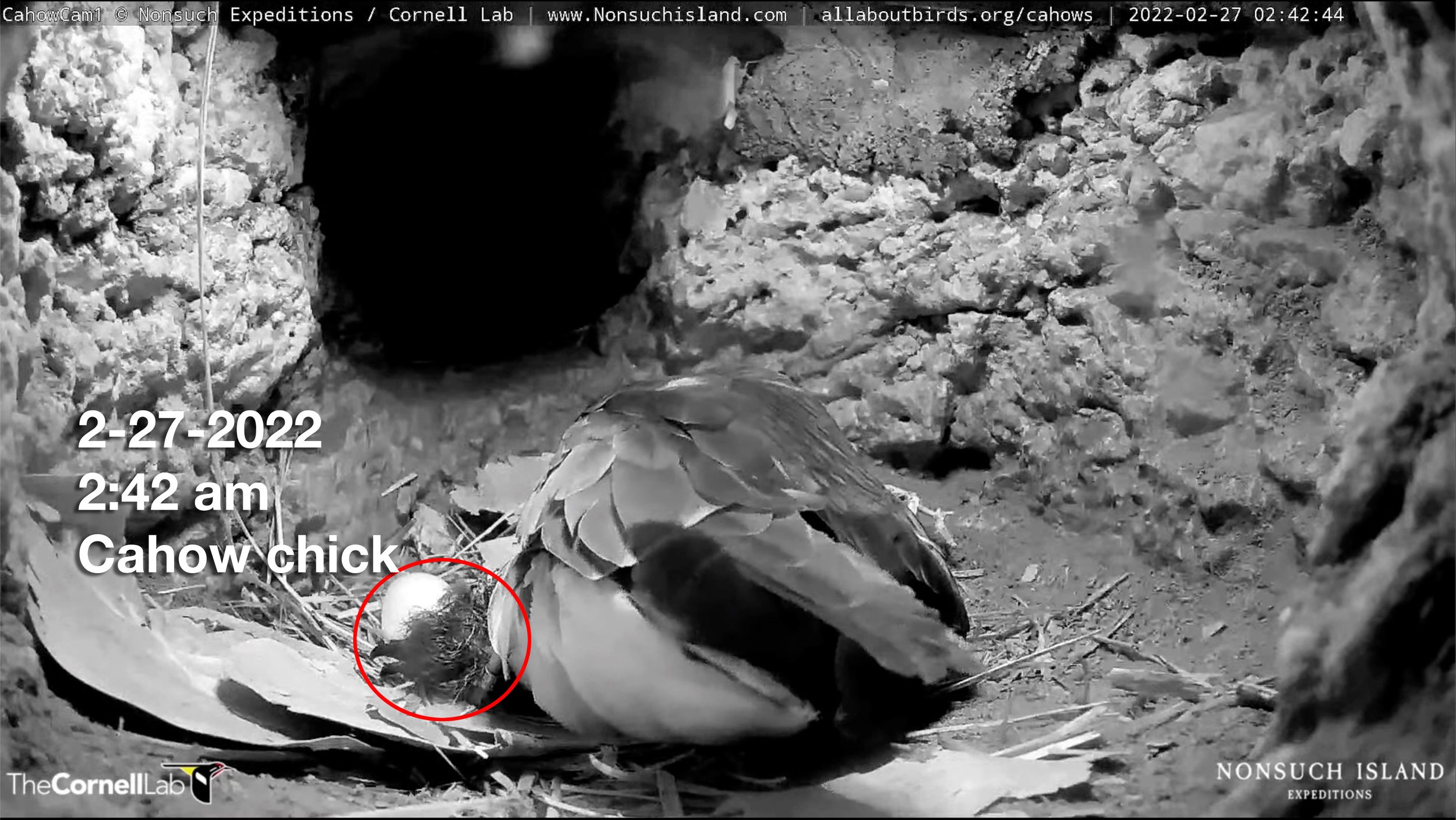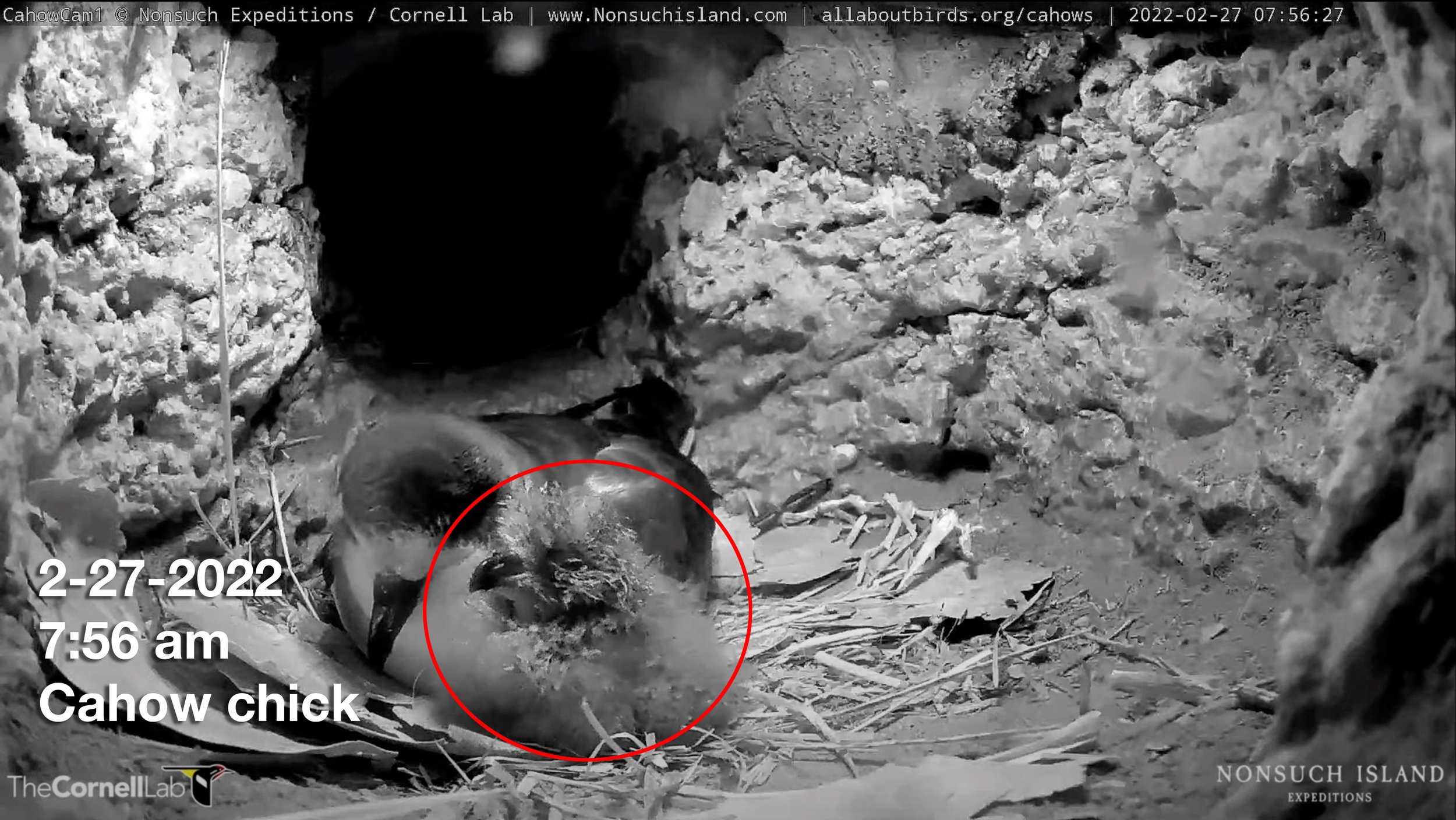This is the homepage for the LIVE-streaming “CahowCams” (Offline for maintenance during December Hiatus: test link to: Cam1 - Cam2 - Cam3) broadcasting from underground nesting burrows of the Bermuda Petrel or "Cahow". They are an IUCN Red Listed, “critically endangered” Lazarus Species, one of the rarest seabirds on the planet that nest only on Nonsuch Island and a few outer rocks in Bermuda. Thought extinct for 300+ years, 17 pairs were re-discovered in the 1950's, since when thanks to a long-term management plan and a more recent very successful translocation project they are back up to 165+ pairs. In the most recent 2024/2025 nesting season (the season starts in late October of one year and extends to June in the following year) there were 165 eggs laid (1 per pair, per year) from which 78+ chicks successfully fledged, including 23 from the new Nonsuch Translocation Colonies!
2025/26 will be the 14th Season that LookBermuda’s Nonsuch Expeditions custom-built “CahowCam” infrared camera systems stream LIVE video (and the 16th recording video) from the underground nesting burrows, from Colony “A” on Nonsuch Island in Bermuda; from which over the years, millions of minutes of footage have been watched by scientists, students, and followers from around the World!
This Season’s internet access is being provided by Digicel, who we thank for their support!
The current 2025/26 Nesting Season officially started on October 14th with the documented on-camera return of one of the CahowCam1 parents a full 2 weeks earlier than the historical average, (the trend is for the season to start earlier and earlier each year as it used to start in November), for the month long period of nest building, courtship and mating, with his mate arriving on October 21st. They will head back to sea for December to feed, the females return in early January to lay their single egg, the eggs hatch late February / beginning of March and the surviving chicks fledge late May /early June, all of which can be followed here. You may also view highlights of the prior nesting seasons further down this page.
To be notified of significant CahowCam events and milestones please sign up for our Newsletter or follow our Facebook page or Twitter feed
LIVE>>> CahowCam 1 LiveStream
2025/2026 Season:
October 14th, 2025: One of our “CahowCam1” pair has returned for the start of the 2024/25 nesting season, the earliest return on record, a full 2 weeks earlier than the historical average. Watch the LIVEstream above.
October 21st, 2025: Our “CahowCam1” pair have reunited with the return of its mate on October 21st.
December 3rd 2025: They have no gone back out to sea until late December early January when she will return to lay her single egg and he will immediately take in the first +/- 2 week incubation period.
ARCHIVE & Prior Season Highlights
ARCHIVE January 8th 2023 @3:15am: The female has now returned and then as predicted by Jeremy, supported by a decade of CahowCam observations, exactly an hour later she laid her single egg! Watch the Archive Replay
ARCHIVE Feb 26th 2022: The hatching process is well underway! First pip was seen @ 2:32 am, three pips @ 3:24 am, a large pip at 4:12 am, then peeping from inside the egg is heard @5:51am, followed by subsequent reveals throughout the day. Then 24 hours from the first pip, our chic hatched!
ARCHIVE CahowCam 1 2022 fledging highlights seen below.
LIVE>>> CahowCam 2 LIVESTREAM
The pair from CahowCam 2, were one of the most successful pairs in the Colony and amongst the latest to return, lay their egg, and for their chick to fledge. However, in the fall of 2023 the male returned on Nov 2nd, but his mate did not, (and is presumed to have died at sea), then a younger female joined him on the 9th, which he at first resisted but then seemed to accept. They proceeded to lay a single egg in the Spring of 2024, read blog post which failed (not uncommon for new pairs).
They both returned in the fall of 2024, (as documented on camera, she arrived first and spent time with an interloping male, resulting in a fight upon his return), laid the egg in Jan of 2025 and produced a chick. The chick, now named “Inna” fledged on June 13th, but not without challenges (a tropic bird attack) and controversy (“Whos’s the Daddy” paternity questions). Please see the blog posts for details…
UPDATE: For the 2025/26 season she once again returned a few days earlier than him and the cameras documented her mating with another male, setting us up for another now infamous “Who’s the Daddy” saga…
ARCHIVE & PRIOR SEASON HIGHLIGHTS
Archive video of “Inna” fledging on June 13th 2025:
Screenshot of the 2023 CahowCam2 chick hatching…
LIVE >>> CahowCam 3 “SurfACE CAM”
This is the camera mounted above ground on the “Surface” in the middle of the Colony A, which apart from allowing the team to monitor the coastal conditions (even during hurricanes as seen below) is mostly used during the fledging period when it allows the team to remotely control the camera to track the chicks (all in infrared) as they come out at night to exercise and imprint on their surroundings…
UPADATE Oct 30 2025 > Hurricane Melissa: As Melissa passes to our West during the night of Oct 30/31, the ocean swells will increase drastically putting the Cahows nesting on that island at risk. The force and direction of the wind / waves will affect if and how badly Green Island gets over-swept / submerged so we will keep this camera focused between a view of the Nonsuch Coastline with Green on the right, a view zoomed in on Green Island to show the breaking waves, and a view of Horn Rock to the South West of Nonsuch. Any significant updates will be posted in our blog, and via our Cahow email alerts / Newsletter that can be subscribed to here.
September 2023 HURRICANE PASSAGE REPLAY
X (Twitter) Updates:
2021/22 Nesting Season Video Health Checks & Highlights
This project is being supported by the following:

